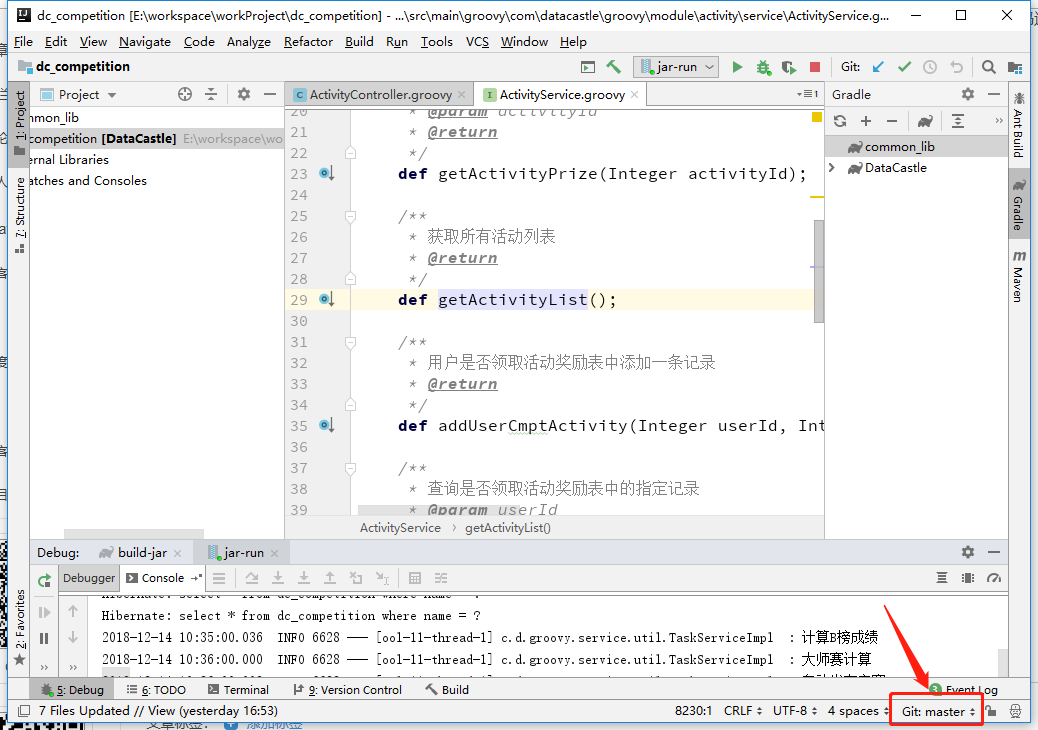JSP开发之JSP 文件上传案例了解下
JSP 可以与 HTML form 标签一起使用,来允许用户上传文件到服务器,这个上传的文件可以是文本文件或图像文件或任何文档。我们这次来看下这个功能,首先来看目录结构:

目录嘞,大概就是上面这些东西了,完事有两个包需要下载下,咱这里给两个路径哈:
完事咱们先来看index.jsp的代码:
- commons-fileupload-1.3.2.jar
- commons-io-2.5.jar
完事我们来看下index.jsp的代码:
<%@ page language="java" contentType="text/html; charset=UTF-8"pageEncoding="UTF-8"%><!DOCTYPE html PUBLIC "-//W3C//DTD HTML 4.01 Transitional//EN""http://www.w3.org/TR/html4/loose.dtd"><html><head><meta http-equiv="Content-Type" content="text/html; charset=UTF-8"><title>文件上传实例</title></head><body><h1>文件上传实例</h1><form method="post" action="/blog/UploadServlet" enctype="multipart/form-data">选择一个文件:<input type="file" name="uploadFile" /><br/><br/><input type="submit" value="上传" /></form></body></html>
完事就是message.jsp的代码:
<%@ page language="java" contentType="text/html; charset=UTF-8"pageEncoding="UTF-8"%><!DOCTYPE html PUBLIC "-//W3C//DTD HTML 4.01 Transitional//EN""http://www.w3.org/TR/html4/loose.dtd"><html><head><meta http-equiv="Content-Type" content="text/html; charset=UTF-8"><title>文件上传结果</title></head><body><center><h2>${message}</h2></center></body></html>
接下来就是UploadServlet.java的代码:
package com.luyaran;import java.io.File;import java.io.IOException;import java.io.PrintWriter;import java.util.List;import javax.servlet.ServletException;import javax.servlet.annotation.WebServlet;import javax.servlet.http.HttpServlet;import javax.servlet.http.HttpServletRequest;import javax.servlet.http.HttpServletResponse;import org.apache.commons.fileupload.FileItem;import org.apache.commons.fileupload.disk.DiskFileItemFactory;import org.apache.commons.fileupload.servlet.ServletFileUpload;/*** Servlet implementation class UploadServlet*/@WebServlet("/UploadServlet")public class UploadServlet extends HttpServlet {private static final long serialVersionUID = 1L;// 上传文件存储目录private static final String UPLOAD_DIRECTORY = "upload";// 上传配置private static final int MEMORY_THRESHOLD = 1024 * 1024 * 3; // 3MBprivate static final int MAX_FILE_SIZE = 1024 * 1024 * 40; // 40MBprivate static final int MAX_REQUEST_SIZE = 1024 * 1024 * 50; // 50MB/*** 上传数据及保存文件*/protected void doPost(HttpServletRequest request,HttpServletResponse response) throws ServletException, IOException {// 检测是否为多媒体上传if (!ServletFileUpload.isMultipartContent(request)) {// 如果不是则停止PrintWriter writer = response.getWriter();writer.println("Error: 表单必须包含 enctype=multipart/form-data");writer.flush();return;}// 配置上传参数DiskFileItemFactory factory = new DiskFileItemFactory();// 设置内存临界值 - 超过后将产生临时文件并存储于临时目录中factory.setSizeThreshold(MEMORY_THRESHOLD);// 设置临时存储目录factory.setRepository(new File(System.getProperty("java.io.tmpdir")));ServletFileUpload upload = new ServletFileUpload(factory);// 设置最大文件上传值upload.setFileSizeMax(MAX_FILE_SIZE);// 设置最大请求值 (包含文件和表单数据)upload.setSizeMax(MAX_REQUEST_SIZE);// 中文处理upload.setHeaderEncoding("UTF-8");// 构造临时路径来存储上传的文件// 这个路径相对当前应用的目录String uploadPath = getServletContext().getRealPath("/") + File.separator + UPLOAD_DIRECTORY;// 如果目录不存在则创建File uploadDir = new File(uploadPath);if (!uploadDir.exists()) {uploadDir.mkdir();}try {// 解析请求的内容提取文件数据@SuppressWarnings("unchecked")List<FileItem> formItems = upload.parseRequest(request);if (formItems != null && formItems.size() > 0) {// 迭代表单数据for (FileItem item : formItems) {// 处理不在表单中的字段if (!item.isFormField()) {String fileName = new File(item.getName()).getName();String filePath = uploadPath + File.separator + fileName;File storeFile = new File(filePath);// 在控制台输出文件的上传路径System.out.println(filePath);// 保存文件到硬盘item.write(storeFile);request.setAttribute("message",uploadPath);//输出上传文件的地址,可修改}}}} catch (Exception ex) {request.setAttribute("message","错误信息: " + ex.getMessage());}// 跳转到 message.jspgetServletContext().getRequestDispatcher("/message.jsp").forward(request, response);}}
最后我们来处理下web.xml文件:
<?xml version="1.0" encoding="UTF-8"?><web-app xmlns:xsi="http://www.w3.org/2001/XMLSchema-instance"xmlns="http://java.sun.com/xml/ns/javaee"xmlns:web="http://java.sun.com/xml/ns/javaee/web-app_2_5.xsd"xsi:schemaLocation="http://java.sun.com/xml/ns/javaeehttp://java.sun.com/xml/ns/javaee/web-app_2_5.xsd"id="WebApp_ID" version="2.5"><servlet><display-name>UploadServlet</display-name><servlet-name>UploadServlet</servlet-name><servlet-class>com.luyaran.UploadServlet</servlet-class></servlet><servlet-mapping><servlet-name>UploadServlet</servlet-name><url-pattern>/blog/UploadServlet</url-pattern></servlet-mapping></web-app>
目录和文件到这里嘞,就算是创建并且写入完毕了,然后大家就可以在环境中运行index.jsp来查看效果了。
好啦,本次记录就到这里了。
如果感觉不错的话,请多多点赞支持哦。。。



































还没有评论,来说两句吧...